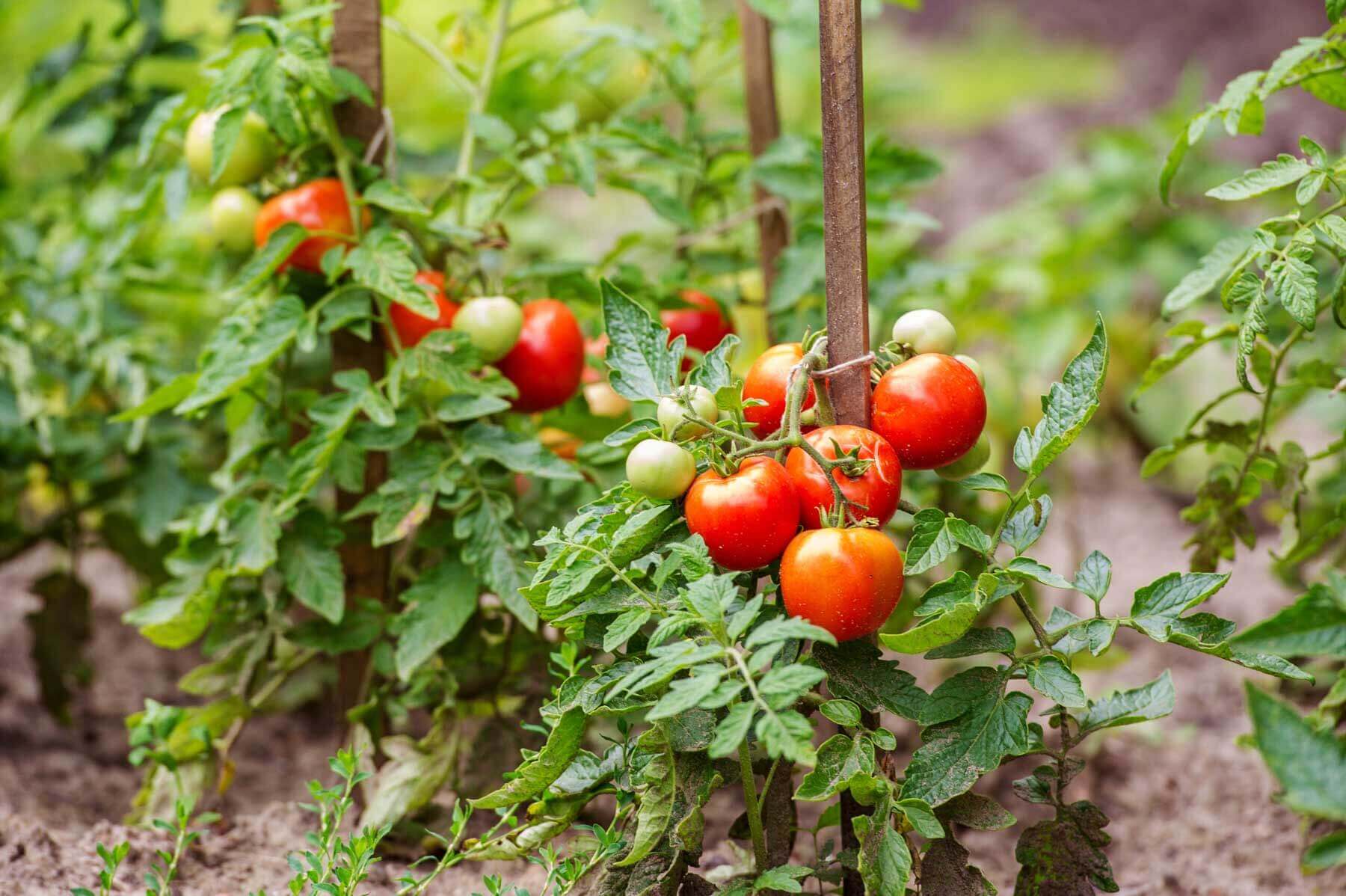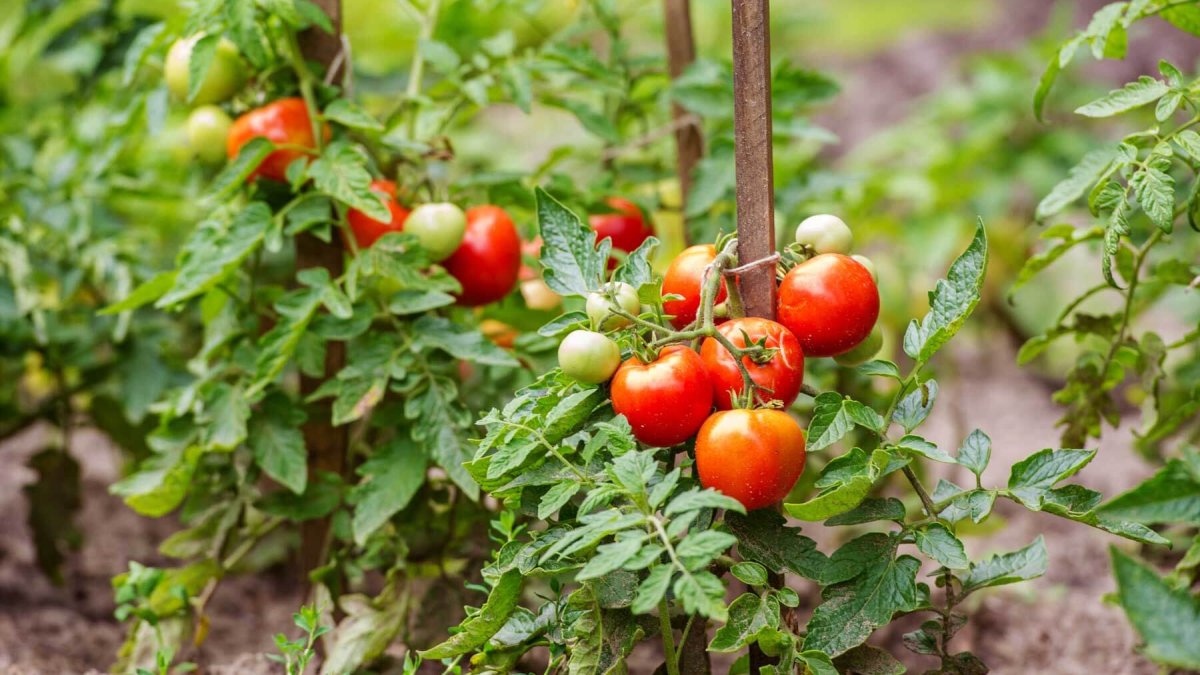
Tomatoes are one of the most popular crops to grow in the garden. From pasta sauces to salads via pizza toppings, they are versatile fruits with many culinary uses. Tomatoes are easy to grow and produce masses of tasty, juicy tomatoes more flavoursome than those you can buy in the supermarket. If you’re a keen gardener buy them online at Gardeners Dream.
Choosing The Right Tomato Varieties
Over 10,000 different varieties of tomatoes are grown around the world. While many of these aren’t suitable for UK climates, many, including cherry, beef, salad and plum tomatoes, grow well in this country, so deciding which tomato varieties to grow can be quite tricky.
The main thing to consider when deciding which tomato varieties to grow is how well you’ll enjoy the fruits – there’s no point in growing a yield of beefsteak tomatoes if you only ever eat cherry tomatoes!
Also, think about how much sun the tomato plants will get, and whether they’re growing in the garden or a greenhouse. Choose hardier, disease-resistant varieties for growing out in the garden.
The room you have available is another thing to consider. If space is tight, choose a variety that grows well in hanging baskets. Otherwise, you’re free to crack on with large cordon tomatoes.
Tomatoes come in many shapes, sizes, flavours and textures, and it’s worthwhile doing a little research before deciding on a particular variety.
How to Grow Tomatoes at Home
Most gardeners prefer to grow tomatoes from seeds but others find it quicker and easier to buy a young tomato plant and nurture it through the growing season.
Growing Tomatoes From Seed
Growing tomatoes from seeds is relatively easy and very rewarding. It is also usually the cheapest way to source tomato plants. Tomato seeds are easy to come by, and you can buy them from an online or local garden centre.
When To Sow Tomato Seeds
Sow tomato seeds in the greenhouse from late winter to early spring. If the seeds are to be grown outside, wait until late March to early April.
Prepare Your Seed Tray and Sow the Seeds
Any small container, such as a yoghurt pot or small plant pot is fine, as long as it has drainage holes in the bottom. However, a seed tray with cells is ideal for planting tomato seeds. Fill the tray will seed compost and water it well. Use your finger to create a small hole and place the seeds inside before covering it with soil. Place the seed tray in a propagator or cover it with clear plastic and place it in a spot with plenty of natural light.
Transplant Your Seedlings
After a week or two, the seeds will have germinated, and you’ll start to notice green shoots appearing above the soil surface. At this point, remove the plastic covering or take the seedlings out of the propagator and continue growing them in a warm position, keeping the soil moist but well drained.
The tomato seedlings should be ready to pot on around a fortnight later. You’ll know they’re strong enough when they have at least two pairs of leaves each.
Place some well-draining soil into the bottom of small pots. Gently remove the seedlings from the seed tray and transfer them into the pots, filling in any gaps in the soil. Place the seedlings back in their sunny position and leave them there for around a month. Keep the soil moist and ensure the room temperature doesn’t drop below 16°C.
Around eight weeks after sowing the seeds, the young plants should be ready to move outside, and you can follow the following guide for planting them in the garden.
Growing Tomatoes From Young Plants
Purchasing young tomato plants skips the seed sowing and seedling stage and is a great way to grow tomatoes if you don’t have a greenhouse or a sunny window sill. Young tomato plants should be robust enough to plant in the garden from early summer after the risk of frost has passed.
Hardening Tomato Plants
Whether you’ve grown your tomato plants from seeds or bought them from a garden centre, they need hardened before being planted outside. Doing this gives them the best chance of thriving in the garden. The easiest way to harden tomatoes outside is to use a cold frame. However, if you don’t have access to one, place the tomato plants outside in the morning and bring them back inside overnight. Young tomato plants should become hardened to outside temperatures in around a week, at which point they’re fine to be left in a sheltered spot of the garden 24 hours a day.
Where to Plant Tomatoes
Tomatoes flourish in a sheltered spot with lots of bright sunlight. They love the full sun in the morning but may need some light shade in the afternoon, as too much sun exposure can damage the fruits. Ensure the plants are protected against strong winds and move pots to follow the sun if required.
Planting Tomatoes in the Ground
For many gardeners, the ground is the obvious place to plant tomato plants. The roots can soak up plenty of moisture and nutrients from the garden soil and have room to spread.
When planting tomatoes in the ground, dig in plenty of garden compost or well-rotted manure. Always mulch tomato plants to help provide consistent moisture.
Place the tomato plant quite deep into the soil, making the soil level just below the first leaves on the main stem. Doing this encourages the plant to form roots along the stem, promoting strength.
Press the surrounding soil to firm the plant in and water it well.
Growing Tomatoes in Containers, Pots and Grow Bags
Tomatoes are a popular crop for growing in pots and containers. In the right conditions, tomatoes ripen in almost any container, from large grow bags to smaller hanging baskets.
Planting Tomatoes in Pots and Containers
One of the main benefits of growing tomatoes in cots and containers is that you can move them around to follow the sun. However, it also means you can grow tomatoes almost anywhere, from a sunny balcony to the patio.
Tomatoes have quite expansive root systems, so choose a large enough pot to accommodate the roots. Ensure sufficient drainage holes in the bottom of the pot to prevent the root system from becoming soggy and developing root rot.
Use light, well-draining soil for growing tomatoes in pots and add an extra layer of mulch to keep the compost moist.
Planting Tomatoes in Grow Bags
Grow bags are suitable for growing tomatoes outside or in the greenhouse.
First, shake the bag to dislodge the soil and lie it down in a sheltered, sunny spot before cutting it open across the top. Use a hand fork or trowel to loosen the soil and create a hole for the plant’s root ball. Firm the soil down around the plant and water it well. You may need to add support to ensure the plants grow upright.
Cordon tomatoes – training up supports
Caring for Tomato Plants
While tomato plants are easy to grow, they do require some care and attention to grow tall and produce a bountiful yield of ripe tomatoes.
Watering
Tomato plants need plenty of water to produce a bountiful crop, especially when grown in pots or containers that dry out faster. Water in the evenings to let the plant absorb as much moisture as possible without it evaporating in the sun.
A regular watering schedule is beneficial for helping tomato plants to grow healthily. Irregular watering can damage the fruits and affect the taste, while over-watering can result in root rot. An under-watered tomato plant will start to wilt but it will bounce back when given a drink, so it’s always better to under-water than over-water your tomatoes.
Light
As the seedlings grow into mature tomato plants they need lots of bright sunshine to flourish. However, too much strong sun exposure can lead to cracking and sun-scald. For this reason, you may want to provide some light shade when the sun is at its hottest.
Feeding
Tomatoes are hungry plants that appreciate regular feeding. A good quality liquid feed is ideal for boosting a tomato crop and maximising the flavour. Choose a fertiliser high in potassium – if you’re unsure then pick up a specific tomato feed – and apply every 10-14 days as the tomatoes begin to swell.
Harvesting Tomatoes
If you’ve done everything right, you should be able to harvest a yield of fully ripe tomatoes from your garden.
When to Harvest Tomatoes
Tomatoes start to ripen from mid-summer and are ready to harvest between July and October. The exact time depends on the variety, the growing conditions and the weather. Smaller varieties, like cherry tomatoes, ripen earlier than larger tomato varieties. Likewise, greenhouse tomatoes will be ready sooner than those from outdoor plants.
How to Harvest Tomatoes
When harvest time approaches, check the tomatoes every day to assess whether they’re ready to be picked. You can harvest tomatoes as soon as they turn red and let them ripen indoors, or leave them to ripen on the plant and pick them when they’re ready. Store unripe fruit in a cool, dark cupboard, and it should eventually ripen.
When the tomato is ripe enough, gently grasp it around the fruit without squeezing it too hard. Carefully twist the tomato, and it should come away from the stem quite easily. Stubborn tomatoes can get cut from the plant using sharp secateurs.
Potential Tomato Plant Problems
Like all plants, tomatoes sometimes run into problems during the growing season.
Blossom End Rot
Blossom end rot is caused by a lack of calcium and presents as dark green or black spots on the fruit. This is less worrying than it looks. The calcium supply is usually disrupted by irregular watering, making container-grown tomatoes most susceptible. Adjust your watering schedule to keep the soil consistently moist but never overly wet. During hot spells of weather, you may need to water your tomatoes twice a day. Correcting the watering issue won’t cure the affected fruits, but it will prevent new crops from suffering the same fate.
Tomato Blight
Tomato blight is an often crop-ruining disease that affects both the fruit and the foliage of a tomato plant. It usually occurs in warm, wet weather and results in the plant rotting and decaying.
The first sign of tomato blight is browning, rotting leaves followed by wet brown patches on the fruit. Mature fruit succumbs to this disease faster than green tomatoes, but old and new fruits can both be spoiled.
Prune the plant to cut away affected areas and thoroughly clean any plant supports, as well as the pruning tools. The same part of the garden mustn’t be used to grow tomatoes the following year, as it could affect healthy growth.
Garden-grown tomatoes are more likely to fall victim to tomato blight than those grown in greenhouses.
Tomatoes are generally an easy crop that is as versatile in the kitchen as in the garden. Grow tomatoes in pots, containers, grow bags, hanging baskets or simply plant them out in the garden. With plenty of water and sunshine and a little TLC, you’ll soon have an abundance of tasty tomatoes to share with friends and family.
Emily Hawthorne
Related posts
Stay connected
Today's pick
- Things to Remember While Designing Your Custom Modular Kitchen in GurgaonGurgaon now known as Gurugram is the second largest city in the state of Haryana and is a reflectiossn of an ideal modern city with futuristic goals. Witnessing rapid urbanization, it has also emerged as a hub for contemporary homes, with homeowners seeking innovative and... The post Things to Remember While Designing Your Custom Modular […]

